In the rapidly evolving world of ecommerce, search engine optimization (SEO) plays a crucial role in driving traffic and increasing sales. An effective SEO strategy ensures that your online store is visible to potential customers and ranks well in search engine results. To help you optimize your ecommerce site, we’ve put together a comprehensive SEO checklist for 2024. This guide covers essential aspects of on-page optimization, media usage, product page enhancements, technical SEO, and link building.

Title Tags: Optimize for Success
- Are title tags optimized with primary keywords?
Ensure that your title tags include primary keywords relevant to the page content to improve visibility in search results. - Are title tags under 60 characters?
Keep title tags concise and within 60 characters to ensure they display correctly in search results. - Are H1 tags unique and descriptive?
Use unique and descriptive H1 tags that accurately represent the content of each page.
Headings: Structure for Clarity
- Do headings focus on target keywords?
Incorporate target keywords into your headings to enhance SEO and provide clear guidance to users. - Are there more than one H1 tags?
Use only one H1 tag per page to maintain a clear and logical heading structure. - Is there a logical heading hierarchy?
Organize content using a logical heading hierarchy (H1, H2, H3) to improve readability and SEO.
Collection Pages: Optimize for Rankings
- Is there content on collection pages?
Add relevant content to collection pages to provide value to users and improve search rankings. - Are collection pages optimized for ranking?
Optimize collection pages with keywords, meta tags, and descriptions to enhance visibility in search results. - Does the heading contain target keywords?
Ensure that headings on collection pages include target keywords for better SEO performance.
On-Page Optimization: Enhance Content Quality
- Is content optimized for target keywords and search intent?
Create content that aligns with search intent and incorporates target keywords naturally. - Are multiple media formats like video, audio, images used?
Use diverse media formats to enrich content and engage users more effectively. - Is content appropriately optimized for featured snippets?
Structure content to qualify for featured snippets, such as bullet points, tables, and concise answers. - Is content scannable and easy to read?
Break content into short paragraphs, use bullet points, and maintain a readable font size for better user experience. - Are LSI keywords included?
Integrate Latent Semantic Indexing (LSI) keywords to enhance content relevance and context.
Media: Optimize Visual Elements
- Is alt text optimized?
Use descriptive alt text for images to improve accessibility and search visibility. - Are there relevant images in the article?
Include relevant images that support the content and enhance user engagement. - Are there relevant videos on the page?
Incorporate relevant videos to provide additional value and keep users engaged.
Product Pages: Showcase Unique Features
- Is there unique product specifications?
Provide detailed product specifications to help users make informed purchasing decisions. - Are the product images properly named?
Use descriptive filenames for product images to improve SEO. - Do the product images contain alt tags?
Ensure that all product images have alt tags to enhance accessibility and SEO.
Technical SEO: Optimize Site Performance
- Is your site loading fast?
Optimize site speed to reduce bounce rates and improve user experience. - Is it passing core web vitals?
Ensure that your site meets Google’s Core Web Vitals for optimal performance. - Is the site mobile optimized?
Make sure your site is mobile-friendly and responsive to accommodate all users. - Have you run the site through Screaming Frog?
Use tools like Screaming Frog to identify and fix technical SEO issues on your site.
Link Building: Ensure Quality and Relevance
- Is the website linking out to casino and gambling sites?
Avoid linking to low-quality or irrelevant sites, as this can negatively impact your site’s reputation. - Is the website’s content irrelevant to the niche of the website?
Ensure all content is relevant to your niche to maintain focus and authority. - Are there an unusually high number of outbound links from the site?
Limit outbound links to maintain link equity and avoid appearing spammy. - Does the site have severe drops in traffic in the past?
Analyze traffic trends to identify and address any underlying issues affecting site performance. - Are they trying to manipulate DR artificially through profile links, etc.?
Focus on earning high-quality backlinks naturally rather than attempting to manipulate domain rating artificially.
By following this comprehensive ecommerce SEO checklist, you can ensure that your online store is optimized for success in 2024. Implement these strategies to enhance your site’s visibility, attract more visitors, and drive sales growth.




